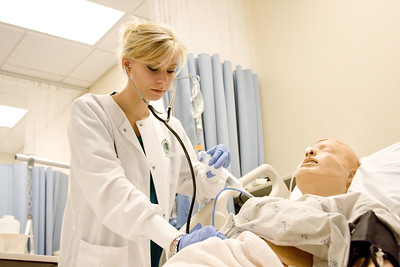Earlier this week, the County College of Morris in Randolph, NJ announced campus construction plans for a 70,000-square foot Center for Health Professions. When complete, the center will simulate a state-of-the-art medical center. It will enable CCM to expand its current healthcare programs in nursing, radiography, respiratory therapy, paramedic science and drug counseling. It will also allow the college to add programs in dental hygiene, dental assisting, surgical technology, diagnostic medical sonography and medical assisting.
There is no doubt that virtually every state is currently experiencing a shortage of healthcare workers. In addition, healthcare professions have very high attrition and turnover rates. Among registered nurses, for example, hospitals and other healthcare providers can expect to lose nearly one-quarter of their nursing staff to job changes or burnout each year. According to the National Library of Medicine, 18% of all new registered nurses leave the profession in the first year. The problem isn’t limited to new nurses, either. The Council of State Boards of Nursing expects to see nearly 1,000,000 nurses leave the profession by 2027.
So, in that regard, training as many nurses as possible makes a lot of sense. Unfortunately, it requires one to ignore the “If-you-build-it-they-will-come” approach to problem-solving that’s at work here. Campus construction will solve training capacity and maybe training quality problems. It won’t prevent turnover or attrition among graduates.
Colleges and universities have the ability and the capacity to train healthcare professionals right now. The problem isn’t the lack program space or training facilities, so new campus construction isn’t going to address the problem. Instead, it is the lack of people who want to go into (and remain in) these professions. In some cases (especially nursing), it is also a lack of qualified nursing instructors.
Campus construction is wasted money with recruiting and retention strategies
Losing one out of five newly graduated registered nurses in the first year of service is not a training capacity problem. It might be a professional problem, or a recruiting problem, or any other number of things, but increasing the capacity of training facilities isn’t going to increase the desire of 1 out of 5 new nurses to want to remain in the profession.
Before I plunked down $30M on a new healthcare education facility, I would want a better understanding of why attrition is so high among healthcare professionals. Additionally, I would want a concrete plan for how the college intends to recruit and retain qualified instructors. Finally, I would want to know more about how the college intends to recruit students into its healthcare programs and prepare them for the realities of healthcare provision.
Simulating a hospital room or a clinical exam room is great. But nurses and other healthcare professionals don’t vacate their professions because their classrooms had different equipment than their employer does. They leave in large numbers because patient care is a meat grinder.
Community college administrators and politicians are often enamored of the idea of spending money on new facilities. Spending $30M on a new healthcare professions training facility (or any other campus building, for that matter) is a waste of funds if the plan does not also include defined strategies to attract both qualified instructors and capable students into the related academic programs.
As a taxpayer, I would much prefer that community colleges spend more money on improving instruction and measuring student outcomes than on throwing together a new building under the assumption that it will attract students to largely thankless or unrewarding professions.
Photo Credit: Hagerstown Community College, via Flickr















